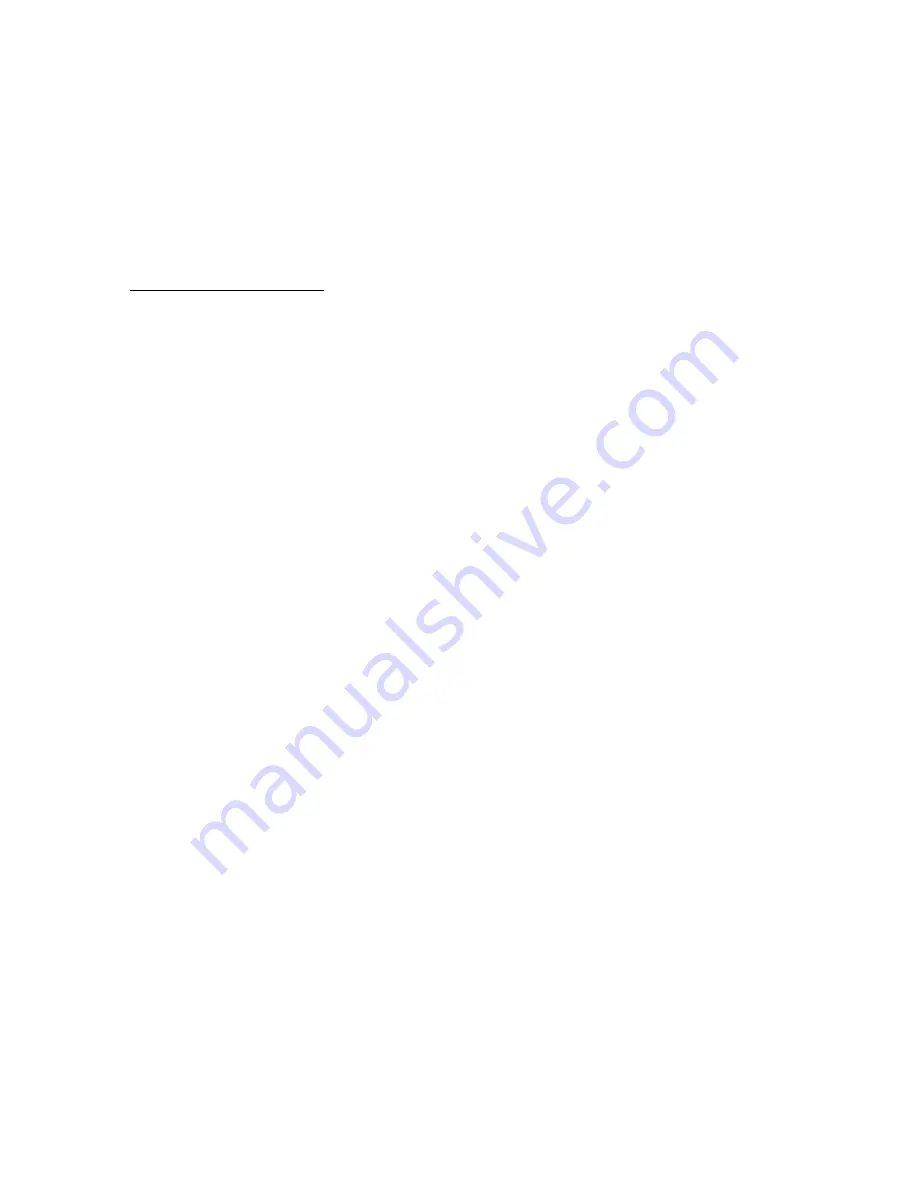
18
user manual
InspIred Instruments Inc.
19
advanced featUres
accessing sUbMenUs:
there are five control panel submenus. each allows you to customize
the performance of the you rock Guitar to better suit your playing
needs. these submenus are ordered numerically.
to access a submenu:
•
press and hold the musIc button.
•
press and release the play button to move to the next sub-
menu. the lights at the bottom of the led display will begin to
flash. the number of flashing leds correspond to the current
submenu. the name of the submenu will scroll by while holding the
music button.
•
release the musIc button.
sUbMenU 1: transpose
here you can transpose the GuItar or synth layer up to two full
octaves above or below the normal settings.
to do so:
•
press the button corresponding to the layer you would like to al-
ter (GuItar or synth).
•
the led display will display the current transposition setting.
•
use the up and doWn buttons or fret select to choose your
desired transposition.
each single digit deviation from ‘0’ represents a 1/2 step transposi-
tion, either up or down. for instance, transposing the standard tun-
ing (eadGbe) of the GuItar layer down to -2 will make it so that the
strings are actually tuned to dGcfad. fret select can also be used,
with the transposition amount is relative to the 12th fret.
note:
fret select only allows adjustment within the fret range, which
is limited to -11. to cover a full octave, press the first fret (-11) and
then press the down button to get (-12)
note:
the (-) button enables/disables the transposition amount saved
in a preset.
sUbMenU 2: User tUnings
here you can set up to 9 custom open tunings. from the home
menu, these can be accessed by holding open and using the up/
doWn buttons to scroll through tunings -1 to -9. once you have
reached your desired tuning number, set the open tuning by doing the
following:
•
press and hold the open button.
•
using the 12th fret as a reference, press a fret above or below
that point to select the new open note for that string. for ex-
ample, to set “dropped-d” tuning, press the 10th fret (d) on the
lowest string. this will set the open tuning for that string to the
d below standard e tuning (two frets below 12, two half steps
below e).
•
release the open button. your custom tuning will now be saved
under the open setting (-1 through -9) that you have selected.
after setting a parameter, press the music button to leave the
menus.
sUbMenU 3: layer options
layer options can be applied to the GuItar and synth layers individ-
ually. for any of the following parameters press GuItar or synth
to activate the layer, then use fret select to set the value of the pa-
rameter. different values can be assigned to the GuItar or synth
layer.
•
EF
-
chorus effect
assign a stereo chorus effect to the GuItar or synth layer - this
parameter adjusts the depth of the chorus (range 0-12).
note:
the (+) batton enables/disables the chorus effect amount saved
in a preset.
•
ch
-
Midi channel selection
use this parameter to select the mIdI channel that the GuItar or
synth layer will transmit. values of 1 ~ 20 can be selected indepen-
dently for the GuItar layer and the synth layer.
mIdI selection: 1 - 16 transmit mIdI data for all of the strings on the
mIdI channel selected.
mIdI selection: 17, 18, 19, 20 are reserved for mIdI mono mode.
the mIdI information for each string is transmitted on a separate
mIdI channel. this allows for polyphonic bending with slIde on.
•
mIdI 17: transmits on (1~6)
•
mIdI 18: transmits on (7~12)
•
mIdI 19: transmits on (6~1)
•
mIdI 20: transmits on (12~7)
•
Vt
-
velocity tables
here you can adjust the reaction of the you rock Guitar to your
picking style. each of the velocity tables handles dynamics – that is,
your ability to control the volume of a triggered note by changing
the applied force of an attack – in a slightly different way. velocity
tables 1-6 allow for different dynamic ranges, with 1 being the most
dynamic, and 6 being the least. table 7, however, has no dynamic
range, rather setting all triggered notes to play at the same volume.
depress the fret corresponding to your desired velocity table. fret 1
corresponds to table 1, fret 2 to table 2, etc. this can be done on
any string.
•
Hd
-
hammer decay
here you can set the rate at which hammer-on velocity decays after
initially triggering a note. the lower the setting (0-21), the longer the
decay. at setting 0, in fact, you will be able to hammer on indefinitely,
with no decay whatsoever. With this option displayed, press down on
a fret to select your desired decay setting. this can be done on any
of the six strings. fret one corresponds to decay setting zero, and
fret twenty-two corresponds to decay setting twenty-one.
•
bE
-
bend enable
here you can toggle the whammy bar function on and off for the de-
sired layer.






















